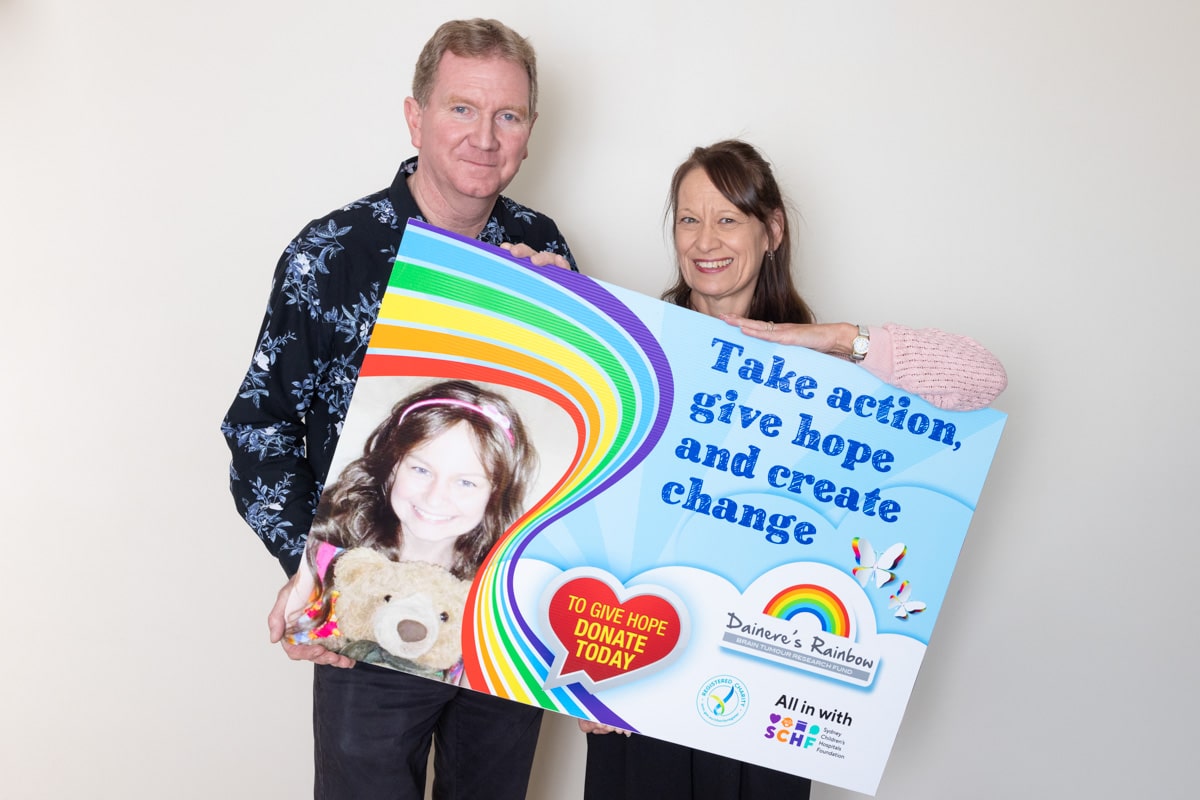Neil Armstrong is famous for being the first man to set foot on the moon but is lesser known as a father who lost his two-year-old daughter to brain cancer.
This happened in 1962 so it’s hardly “news” today. What should make headlines, however, is the fact that in the 61 years since then, the devastating statistics for brain cancer haven’t changed.
The lack of research funds is exasperating for Gungahlin mum of four, Yvonne Anthoney, who lost her youngest daughter, Dainere, to brain cancer 10 years ago – when she was only 15.
Yvonne says Neil Armstrong must have anguished over the fact that scientists could send a man to the moon but couldn’t find a cure for his daughter. In 2023, Yvonne is incredulous that community fundraising makes up 100 per cent of funds for childhood brain cancer initial research.
“Brain cancer is the least funded of all cancer research,” Yvonne says, “because results aren’t always happening and a lot of research funding from the government is based on results. That’s why community funding is so important. If there’s none, nothing’s happening.”
Yvonne is holding Dainere’s cat, Tinkerbelle, on her lap. There are photos and inspirational quotes around her home of Dainere and her bedroom is just as she left it. This is a mother who will do anything to find a cure for this horrendous disease.
Brain cancer kills more children than any other disease.
“They say it’s rare but over a classroom of children every year are dying from it – that’s a classroom of children that could go on to be scientists, doctors, lawyers, change-makers to the world,” Yvonne says. “They’re having their lives stolen. That’s unjust. That has to change.”
Scientists still don’t know the cause or risk factors of brain cancer. Unlike adult cancers where there are lifestyle or genetic factors, brain cancer can occur in a newborn baby.
Dainere’s type of brain cancer was called Medulloblastoma. Over the past 30 years, there’s been a 58 per cent increase in children diagnosed with this form of cancer.
“There hasn’t been much change in the devastating statistics for decades,” Yvonne says. “That’s just not good enough. It’s not fair. They’re losing their futures. You take your child to the doctor and they say ‘go home and make memories’. It’s a cruel disease, too, because even if there is treatment available, it needs to be so toxic to go through the blood-brain barrier and the children are left with dreadful side-effects.”

Incredibly, Dainere raised $100,000 for research by herself, following her diagnosis when she was just 11. Her family (Yvonne, husband Stephen, sister Nalani and brother Jarrett) has continued Dainere’s quest for a cure, raising $632,000 to date. Every cent flows directly to Dainere’s Rainbow Brain Tumour Research Fund, a legacy to Dainere. These vital funds support the research of Dainere’s oncologist, Associate Professor David Ziegler at the Sydney Children’s Hospital Kids Cancer Centre.
“He’s doing world-class research,” Yvonne says. “We’ve got the best minds there and they’re producing some incredible results in the laboratory. He’s created individualised treatment, rather than one size fits all. The treatment fits in with the biology of the child’s brain tumour. Clinical trials are a big start.”
Symptom awareness is also key. “Dainere had vomiting in the morning, which could have been anything,” Yvonne says. “Her eyes started flicking, she was a bit lethargic and at school, the teacher noticed she was starting to write funny and we thought she might have a learning disability. It’s hard to diagnose.”
Yvonne and Stephen took Dainere to a pediatrician and were then sent to hospital for an MRI. Suddenly, they were in a room with a box of tissues on the table and were told Dainere had a brain tumour. Things happened so quickly – Dainere was still in her school uniform when they were flown to Sydney by light aircraft for a 12-hour operation on her brain.
“I still remember the neurosurgeon coming in after surgery and she just started crying,” Yvonne recalls. “She said, ‘I’m so sorry I couldn’t get it all’.”
From then on, Dainere was on a mission. Her bravery is inspiring. Despite her diagnosis, Dainere wanted to help others. She wanted things to change.
“She’d be so ill during chemotherapy and she’d say ‘but there’s people worse off than me’. She inspired us. We say, she left footprints on so many hearts and lives. Dainere said it wouldn’t be in her lifetime, but she had a quote ‘my little voice could only make a small difference but together many voices can create change’.”
So, come on Canberra, come together to help Dainere make a change. Come along to Dainere’s largest fundraising event, the Bibbidi Bobbidi Ball (Dainere loved Disney) on Saturday 24 June (the date Dainere died) at the National Arboretum Canberra.
And if you noticed that Dainere’s Rainbow Fund logo only has six colours, that was Dainere’s idea. A seventh colour will be added when there’s a cure.
Tickets (100 per cent goes to research): daineresrainbow.com.au/events/bibbidi-bobbidi-ball/



